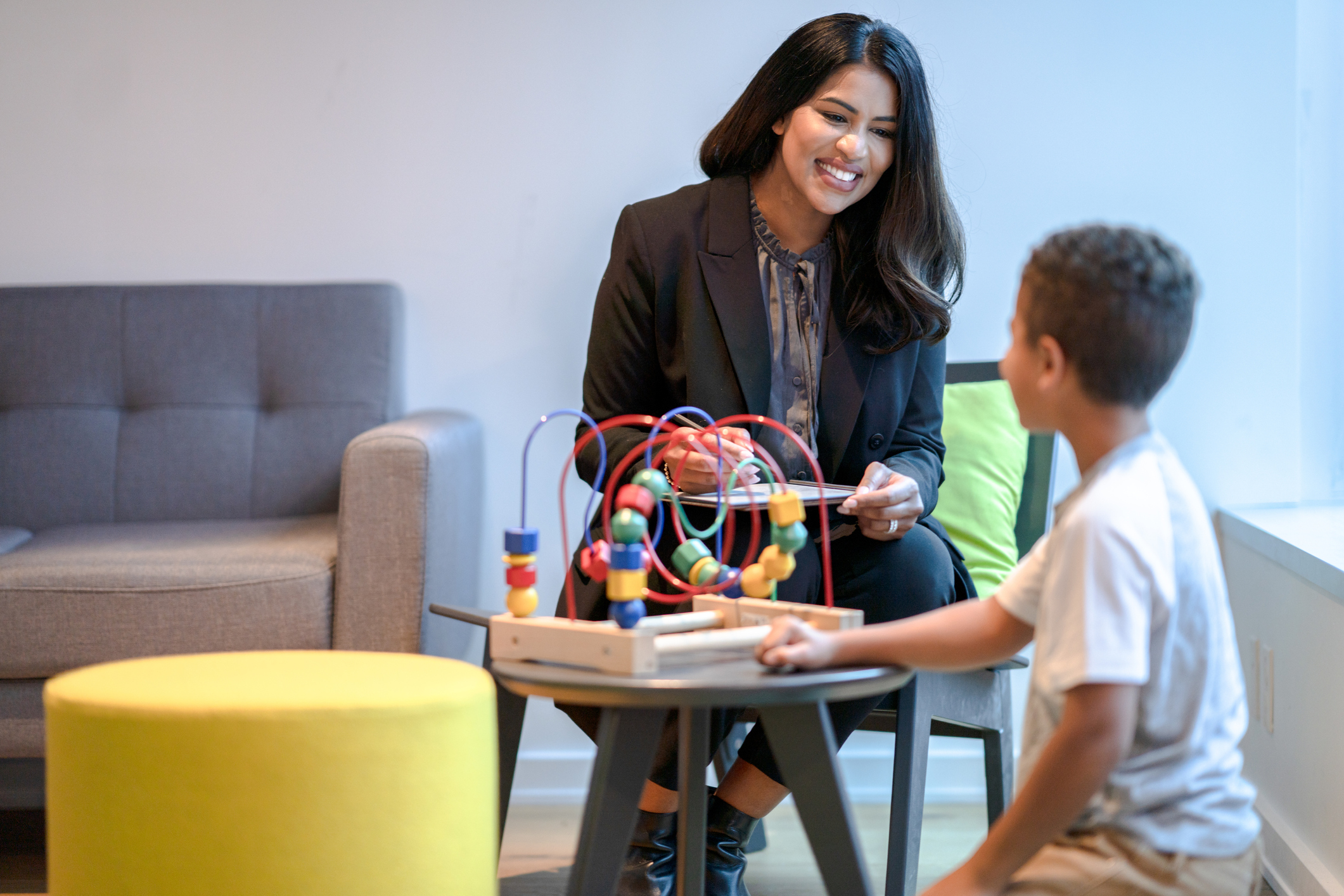Recently, many of us watched, riveted as elite athletes from around the globe competed in the Olympics. They swam, dove, flipped, ran, jumped, and used their strength to do many other things. They often seemed so poised, smiling and waving to the cameras for millions of people. In awe of their physical abilities, we rarely consider the amount of stress these elite athletes face. Similarly, when we put on our favorite fan gear, grab our snacks, and tune in for professional and college sporting events, we expect to be entertained. I would argue that youth sports are no different. I’m regularly at soccer fields and basketball courts on the weekend. There is a concession stand. Spectators are wearing team gear and cheering loudly, though not always appropriately. Cameras are set up to catch the action. Families spend thousands of dollars. Expectations and emotions are high.
According to a 2022 national survey of children’s health, 54% of youth ages 6-17 played on a sports team or took lessons. This means that about 26.8 million kids play sports.
Benefits of Engagement in Sports
Sports can be thrilling, challenging, and character building. They bring people together and create shared culture. Sports can help build and strengthen relationships by promoting social skills. They provide role models. Sports promote the development of leadership, teamwork, and life skills, such as goal setting and work ethic. Participation in a sport can improve confidence and self-esteem and increase opportunities for youth, particularly those who are underserved. Sports can deter youth from getting into trouble by providing activities outside of the classroom, accountability to a coach and teammates, a reason for abstinence from substance use, and motivation for staying in school. And, let’s not forget, participation in physical activity has a lot of physical and mental health benefits (see our blog on physical activity).
Understanding Why Participation is Declining
The percentage of high school youth playing sports has dropped the last few years, with fewer than 50% playing on a school sports team in 2021. The drop in girls’ participation has been greater than in boys’ participation. And, the percentage of youth who identify as ethnic and/or racial minorities has also decreased more than those who identify as white. With many sports operating as “pay to play,” families may be opting out as uniform, league, training, and travel fees soar. One friend shared that they had spent over 10K last year for one child’s sport expenses!
There are other explanations for why youth are dropping out of sports, with lack of enjoyment being one of the most commonly cited reasons. Youth athletes’ performance is affected by their perception of their supporters, including coaches and caregivers. The more money caregivers spend on sports, the greater the pressure to perform is felt by youth athletes. Youth have consistently reported that they don’t like it when caregivers yell at them or the referees from the sidelines. It can be embarrassing, demeaning, and stressful. When youth start focusing on a single sport at a young age, they are more likely to experience burnout. In our own sports community, I’ve seen several gifted athletes decide to pursue other interests or take a break because it’s just “not fun” anymore. With the amount of time and travel required to play competitive sports, youth can feel like they are missing out on other important social (e.g., hanging out with friends on weekends, Homecoming activities), learning (e.g., enough time to finish homework), and work opportunities.
Each year, 2.6 million youth suffer sports injuries that require treatment in an emergency department. One of my boys is included in this statistic. When we were out of state last year, he sustained head-to-head contact in a game and required a visit to the emergency department. Thankfully, it was not concussion related. We’ve watched many friends break bones, tear ligaments, and sustain concussions. There is always a chance of injury when playing sports, but intense training and overuse of muscles and joints can increase injuries, causing early dropout and limiting participation.
Is Sports-Related Anxiety Helpful or Harmful?
In one study, over 90% of high school student athletes reported that they experience anxiety related to their sports play. One third of them said that anxiety had positively affected their athletic performance. How does this make sense? Indeed, a low to moderate level of anxiety can be beneficial for performance in a variety of domains, including athletic performance. Anxiety triggers the release of dopamine, a brain chemical that can energize us and help us to feel more motivated. Low level anxiety might include: “butterflies” in the stomach and a slightly elevated heart rate.
High levels of anxiety can cause us to feel ill, out of control, and reduce motivation. Signs of intense anxiety may include: fast breathing, muscle tension, frustration, paralyzing terror, cold sweat, negative self-talk, loss of interest, dissatisfaction with performance, upset stomach and diarrhea. You may have heard this referred to as “choking under pressure.” These signs may be present leading up to, before, during, and after a competition. According to the American College of Sports Medicine, approximately 30% of female and 25% of male college athletes report having significant anxiety.
The Role of Coaching
Coaches play a significant role in youth athletes’ lives and have the potential to influence them into adulthood – both negative and positive impacts. A coach’s behaviors and language set the tone for the team and what will be expected. In my opinion, we do not place a high enough value on this in youth sports. Studies have shown that hostile interactions between coaches, caregivers, and referees can have a negative impact on youth engagement in sports. When a coach values both the mental and physical health aspects of a sport, youth athletes are less likely to feel stress and anxiety associated with play. If a coach, using mature language and complex directions, gets angry when the young players cannot complete the task, the players will likely be confused, upset, and lose confidence. On the other hand, use of age-appropriate language and activities in practice and training sets the stage for positive communication exchanges between coaches and players. Similarly, when a coach understands how appropriate feedback and reinforcement shape behavior, the coach fosters an environment of healthy respect and communication. For example, when a coach provides clear directions, attentively watches performance, and offers feedback (both positive and constructive), youth anxiety decreases, and performance improves. The youth feels like a valued member of the team, motivated to work hard. Lastly, coaches who champion diversity and promote team relationship building outside of sports performance create a culture of inclusion and belonging.
How Caregivers Can Have a Positive Impact
There would be no youth sports without caregiver involvement. Caregivers log countless hours and provide many resources to support their children’s sports play. So, how can caregivers be engaged without being “too involved”?
- Ask your child how they are feeling. Be patient and listen. For example, “How do you feel about how you played?” Check in regularly about their stress level (e.g., On a scale of 1-10, how stressed do you feel?”)
- Encourage healthy behaviors related to your child’s sleep, nutrition, and social engagement that promote a healthy body and mind, ready for sports participation. For example, drink plenty of water and get the recommended amount of sleep. Have nutritious snacks and meals readily available to provide the appropriate “fuel” for their bodies and minds to work hard.
- Praise effort and not outcome. For example, “I like the way you hustled the whole game” instead of “Why didn’t you win?” There are many reasons why games are won or lost. Effort is something that a child has control over. When you praise or question effort, your child can make changes to improve effort. Your child may not have control over the outcome of a game.
- Leave coaching to the coaches. Refrain from providing feedback to your child from the side lines. If you are communicating with your child, they may actually miss important information from a coach or part of play. Instead, sit back and enjoy the play. However, cheering (e.g., “Way to go!”) is part of what makes sports fun and is encouraged.
- Refrain from engaging a referee. As a spectator, it is not your role to talk to the officials. Youth are often embarrassed when their caregivers approach referees. You may even find freedom in the opportunity to sit back, relax, and enjoy.
- Evaluate the character of the coach and the culture of the team. Consider whether the coach (and team) is a good fit for your child. If you are concerned about your child’s mental and/or physical health, advocate for your child.
- Approaching a coach about playing time is generally not recommended, particularly in the heat of the moment following a frustrating game. If you are upset, consider waiting 24 hours before requesting to speak with a coach to give yourself some time to calm down. Difficult conversations go much more smoothly when everyone is calm.
- If your child is experiencing intense anxiety or mood concerns, contact your primary care provider.
Resources for Managing Sports-Related Anxiety
—
About the Author
Janelle Wagner Ph.D., serves on the Professional Development Team as an Associate Trainer and Consultant for PracticeWise. Learn more about Dr. Wagner on the PracticeWise team page.







